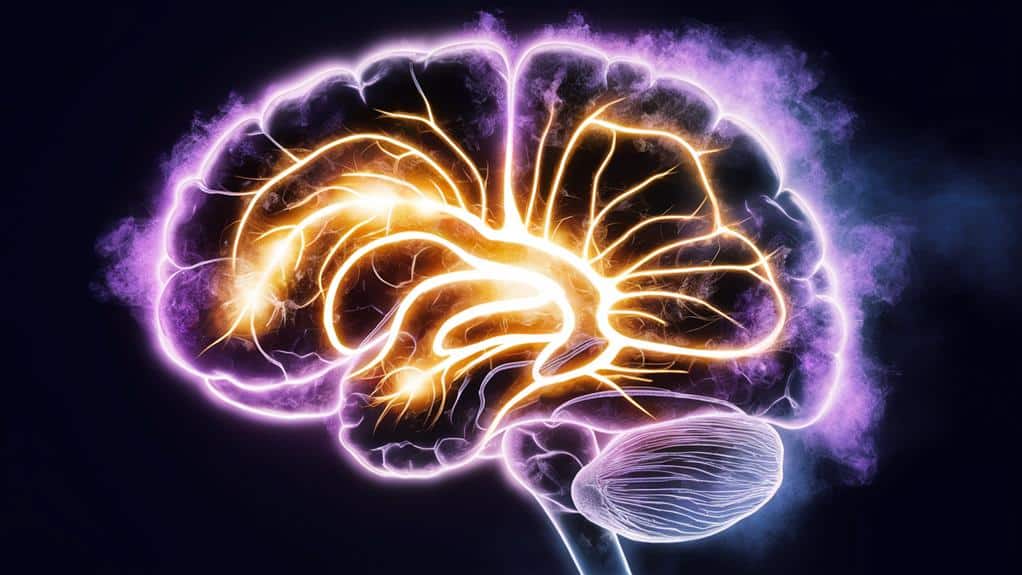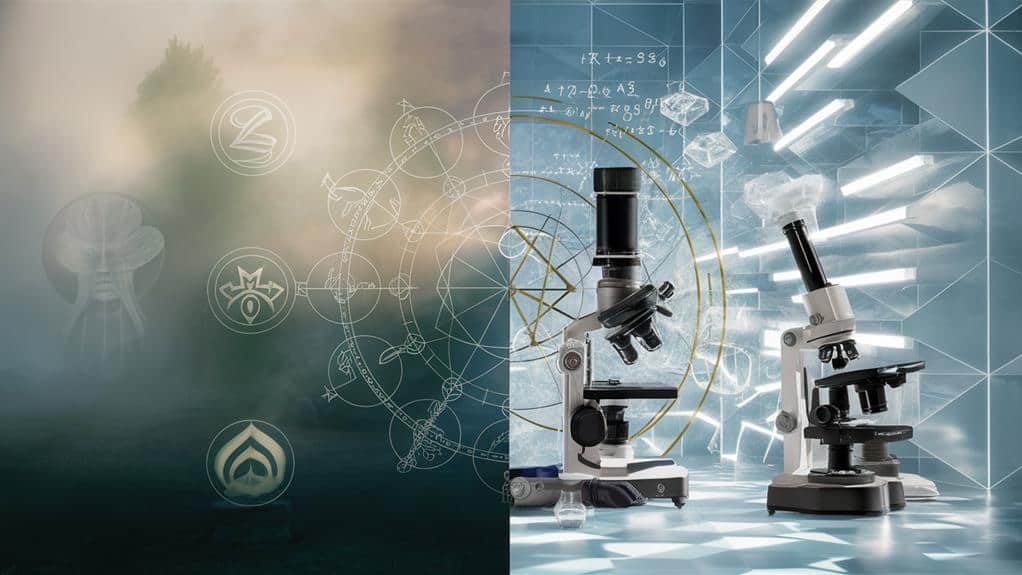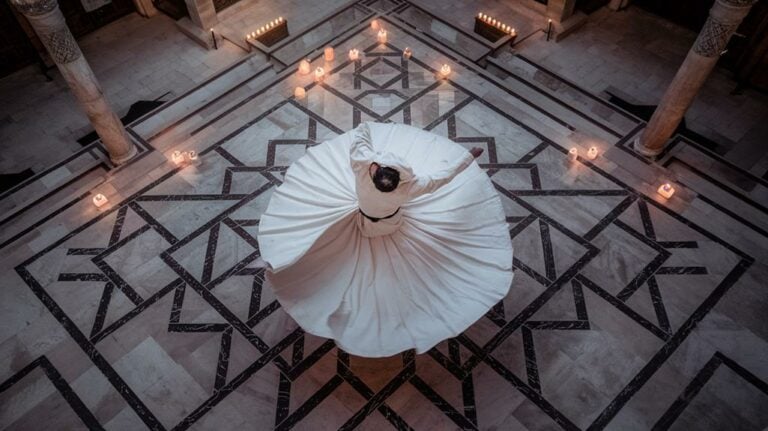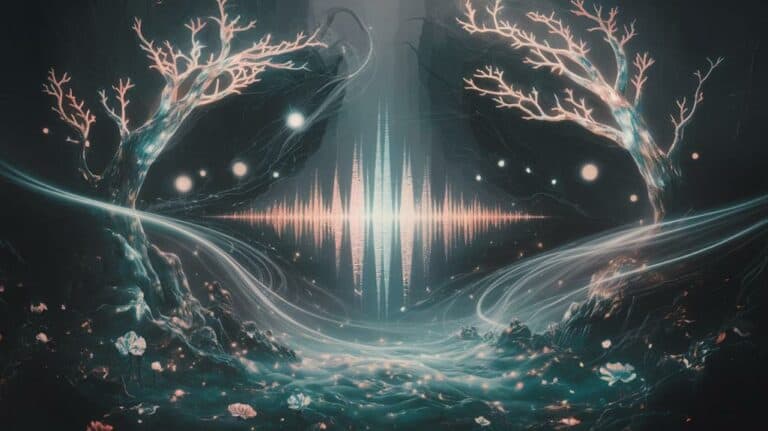Critiques and Skeptical Perspectives on Mysticism
You’ll find that mystical experiences present a fascinating paradox in our quest for understanding consciousness and reality. While millions report profound spiritual encounters that feel undeniably real, these experiences consistently elude scientific verification and rational explanation. As you consider the various critiques of mysticism, you’re confronted with compelling neurobiological evidence suggesting these transcendent moments might simply be products of brain chemistry and cultural conditioning. Yet the persistence of mystical experiences across cultures and throughout history raises intriguing questions about human consciousness that neither pure skepticism nor blind acceptance can fully resolve.
The Scientific Critique of Mysticism

Since the rise of empirical methods, scientists have consistently challenged mystical claims and experiences. You’ll find that researchers point to neurological studies showing how meditation and spiritual practices trigger specific brain regions, suggesting these transcendent moments might simply be products of neural activity.
They’ve demonstrated how sensory deprivation, fasting, and certain chemicals can reliably produce experiences remarkably similar to those described by mystics throughout history.
When you examine the scientific perspective, you’ll notice it doesn’t necessarily deny the profound impact of mystical experiences but rather seeks to understand them through measurable, reproducible means.
You’re confronted with evidence that suggests these experiences, while deeply meaningful to those who’ve them, might stem from predictable biological processes rather than supernatural sources.
The scientific method‘s emphasis on falsifiability and empirical evidence stands in stark contrast to the ineffable nature of mystical claims. Yet, you might wonder if reducing transcendent experiences to mere brain chemistry fully captures their transformative power in human consciousness.
Science’s materialist framework challenges you to reconcile the measurable with the meaningful.
Cultural Conditioning and Mystical Experiences
Cultural anthropologists and religious scholars have extensively documented how mystical experiences take distinctly different forms across various societies and belief systems. You’ll find that a Buddhist monk’s description of enlightenment differs markedly from a Christian mystic’s account of divine union, while an indigenous shaman’s spiritual journey bears little resemblance to a Sufi’s experience of fana.
These variations aren’t merely superficial – they reflect deep-seated cultural frameworks that shape how you’ll interpret and express transcendent experiences.
You’re likely to notice that your own mystical experiences, should you have them, align with your cultural and religious background. If you’ve grown up in a monotheistic tradition, you might interpret a mystical experience as communion with a personal deity, while someone from a non-theistic background might understand the same phenomenology as dissolving into universal consciousness.
This cultural conditioning runs so deep that it’s difficult to determine where universal mystical experiences end and culturally-shaped interpretations begin. When you examine mystical accounts across cultures, you’ll discover that even the language used to describe these experiences relies heavily on culturally-specific metaphors and symbols.
Psychological Explanations for Mystical States

Beyond cultural interpretations of mystical experiences, modern psychology offers compelling explanations for these altered states of consciousness. You’ll find that neuroscience has identified specific brain activities during meditation, prayer, and transcendent moments that mirror patterns seen in temporal lobe epilepsy and other neurological conditions.
What you’ve interpreted as divine connection might actually stem from predictable changes in your brain chemistry and neural firing patterns. When you’re experiencing what feels like mystical unity, your brain’s default mode network often shows reduced activity, while your limbic system floods with neurotransmitters that can create feelings of boundlessness and bliss.
You’ll notice that many mystical experiences share striking similarities with the effects of certain psychedelic substances, suggesting a purely biological foundation. The depersonalization you might feel during profound spiritual moments can be traced to specific alterations in your brain’s parietal lobe function, which governs your sense of self and spatial awareness.
These findings don’t necessarily invalidate the significance of your mystical experiences, but they do suggest that what we’ve historically attributed to the supernatural might be explicable through natural, psychological mechanisms that we’re only now beginning to understand.
Empirical Evidence and Testing Limitations
Testing mystical experiences through traditional scientific methods presents significant challenges that limit our ability to study them empirically. You’ll find that the deeply personal and subjective nature of mystical states makes them resistant to standard measurement tools and replication protocols.
When you attempt to capture these experiences in a laboratory setting, you’re often left with only physiological markers and self-reported descriptions that can’t fully convey the profound depths of the experience.
You’re confronted with the reality that mystical encounters don’t conform to the controlled variables and repeatable conditions that science demands. The very act of attempting to measure or observe these states may fundamentally alter their nature, creating what you might call an experiential uncertainty principle.
Consider how the tools at your disposal – brain scans, psychological assessments, and behavioral observations – can’t penetrate the ineffable qualities that mystics describe.
You’ll notice that even when participants report similar phenomenological features across different mystical experiences, there’s no way to verify the authenticity or depth of these encounters through current scientific frameworks, leaving you with an epistemological gap between subjective truth and empirical verification.
Neurobiological Perspectives on Mystical Phenomena

Neuroscientific research has identified three key brain regions that activate during reported mystical experiences: the temporal lobe, prefrontal cortex, and parietal lobe. When you’re having what feels like a transcendent experience, your brain’s temporal region processes sensory integration while diminishing your usual self-awareness boundaries. This neural activity often corresponds with reports of unity consciousness and ego dissolution.
You’ll find it fascinating that your prefrontal cortex, typically associated with executive function, shows heightened activity during meditation and contemplative states. This suggests that mystical experiences aren’t merely passive phenomena but engage your brain’s most sophisticated cognitive networks.
Meanwhile, your parietal lobe’s reduced activity during these states correlates with altered space-time perception and feelings of boundlessness.
While these neurobiological insights don’t necessarily invalidate mystical experiences, they do provide a materialist framework for understanding them. You’re witnessing the emergence of a new paradigm where ancient spiritual phenomena can be mapped onto modern brain science, though you’ll need to decide whether this enhances or diminishes the profound nature of mystical experiences in your own philosophical framework.
Language and Mystical Claims
The analysis of mystical experiences extends beyond brain activity into the thorny domain of language and description. When you attempt to translate ineffable mystical experiences into words, you’ll encounter fundamental limitations of human communication. You’re trying to squeeze infinite experiences into finite linguistic containers.
You’ll notice how mystics throughout history have struggled with this predicament, often resorting to metaphors, paradoxes, and poetry to convey their experiences. The challenge isn’t just semantic – it’s structural. Your ordinary language evolved to describe everyday physical reality, not transcendent states of consciousness.
When you claim to’ve touched the divine or experienced ultimate reality, you’re using tools that weren’t designed for such profound purposes. This linguistic barrier raises critical questions about the validity of mystical claims.
You’re faced with an impossible task: how do you verify or analyze experiences that defy conventional description? The words you choose might distort the very essence of what you’re trying to convey, creating a gap between the raw experience and its verbal representation that can’t be bridged through traditional means of communication.
Logical Fallacies in Mystical Thinking

Many mystical claims rely on common logical fallacies that undermine their credibility.
You’ll often encounter appeals to ancient wisdom, where the age of a belief is mistakenly equated with its truth value. When you examine mystical arguments closely, you’ll notice the frequent use of post hoc reasoning, where coincidental events are interpreted as causally connected spiritual phenomena.
Another pervasive fallacy you’ll find in mystical thinking is the appeal to personal experience, where subjective encounters are presented as universal truths without considering alternative explanations.
You’ll also discover how mystics often employ false dichotomies, suggesting that if science can’t explain something, their supernatural interpretation must be correct. The argument from ignorance appears repeatedly when mystical thinkers claim that because something can’t be disproven, it must consequently be true.
As you explore deeper into mystical claims, you’ll recognize how circular reasoning perpetuates beliefs – the experience proves the belief, while the belief validates the experience.
These logical missteps don’t necessarily invalidate all mystical insights, but they should prompt you to approach such claims with careful discernment and rational scrutiny.
Social Construction of Mystical Knowledge
Mystical knowledge emerges out of complex social interactions between spiritual seekers, teachers, and their surrounding cultures.
You’ll find that what’s considered mystical truth in one society may be dismissed as superstition in another, revealing how deeply our understanding of the transcendent is shaped by cultural context and social dynamics.
When you examine mystical traditions closely, you’ll notice they’re often transmitted through established hierarchies and institutions that determine what counts as authentic spiritual experience.
These power structures don’t just preserve knowledge – they actively shape it. You’re inheriting interpretations that have been filtered through centuries of cultural adaptation and reinterpretation.
The language you use to describe mystical experiences isn’t neutral – it’s loaded with cultural assumptions and shared meanings that you’ve absorbed from your community.
Even your most personal spiritual insights are expressed through metaphors and concepts you’ve learned from others.
This doesn’t invalidate mystical experiences, but it suggests that you can’t separate them from their social context.
What you perceive as direct, unmediated spiritual truth is inevitably shaped by the collective understanding of your time and place.
Mysticism Versus Rational Inquiry

Fundamental tensions exist between mystical approaches and scientific methods of understanding reality. When you examine mystical claims through the lens of rational inquiry, you’ll find yourself maneuvering between two seemingly incompatible epistemological frameworks.
While mystics assert direct, ineffable experiences of ultimate truth, scientific methodology demands empirical evidence, repeatability, and logical consistency.
You’re challenged to reconcile these divergent paths to knowledge. The scientific method asks you to maintain skepticism, test hypotheses, and rely on measurable data, while mystical traditions invite you to transcend rational thought entirely.
This isn’t merely an academic dispute – it’s a profound question about how you can know what’s real and true. The mystic’s claim that certain truths lie beyond rational comprehension directly challenges your ability to verify and validate experiences through conventional means.
Yet, you might consider whether this apparent conflict stems from attempting to measure one domain’s insights using another’s tools. Just as you can’t weigh light or measure love in meters, perhaps mystical experiences resist quantification precisely because they operate outside rationality’s established boundaries.
Verification Problems in Mystical Experiences
A central challenge in examining mystical experiences lies in their inherent resistance to verification. You’ll find that these deeply personal encounters with the transcendent often defy the conventional tools of empirical investigation, leaving you to grapple with questions that extend beyond measurable parameters.
When you explore mystical encounters, you’re confronted with experiences that don’t conform to standard methods of scientific validation. You can’t replicate someone’s vision of divine unity in a laboratory, nor can you measure the depth of their spiritual revelation with conventional instruments. The ineffable nature of these experiences means you’re working with accounts that are fundamentally subjective and deeply personal.
Consider how you’d verify claims of enlightenment or divine communion. You’ll find that mystical experiences often transform the experiencer in ways that aren’t quantifiable through traditional means. While you might observe changes in behavior or perspective, the core experience remains locked within the individual’s consciousness, challenging your ability to distinguish genuine mystical encounters from psychological phenomena or elaborate self-deception.
This verification problem continues to be a cornerstone of skeptical arguments against mysticism’s epistemic validity.









